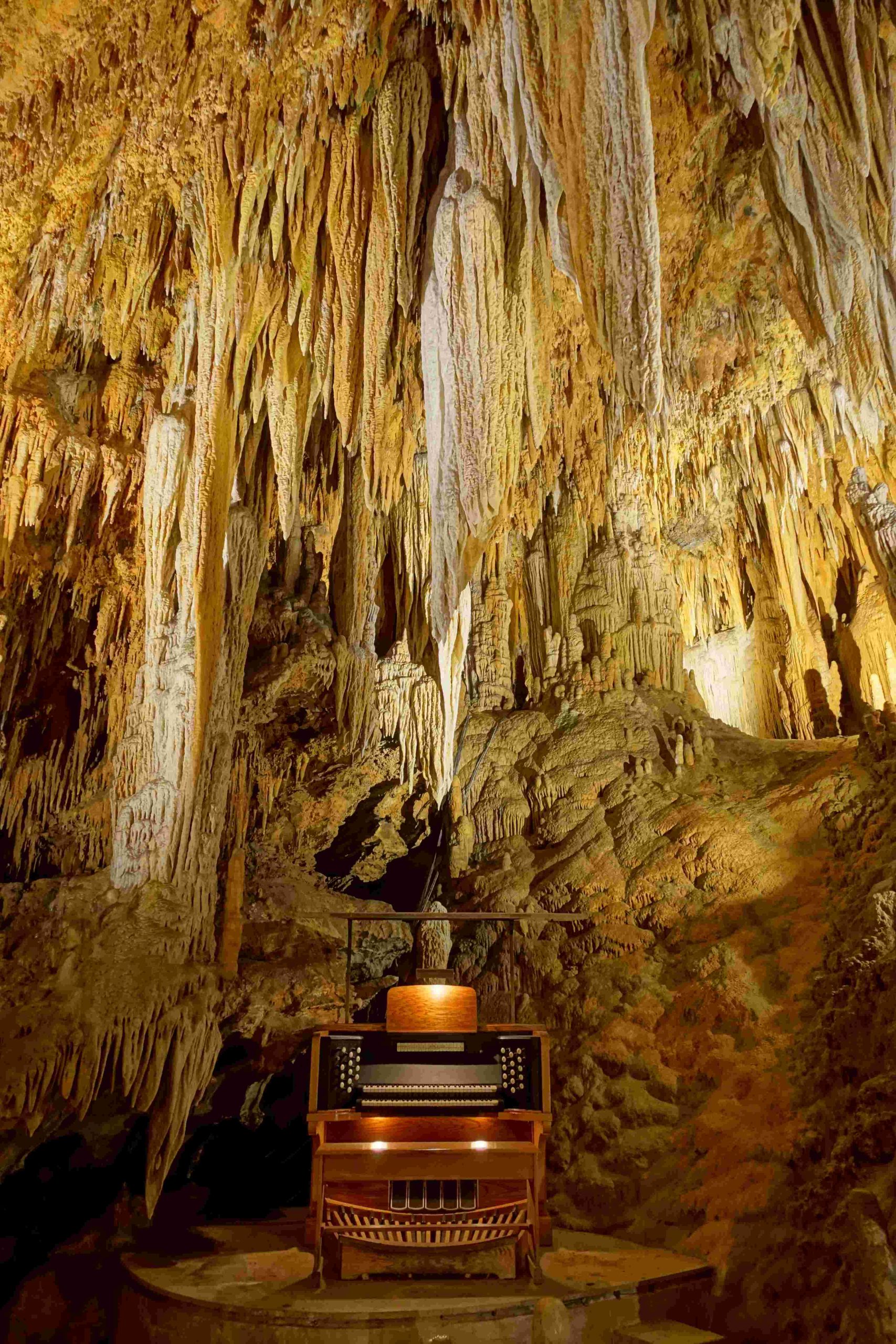Luray Caverns, located in Virginia’s Shenandoah Valley, are a testament to nature’s artistry and geological processes. These caverns are formed through a complex interplay of limestone erosion, water action, and mineral deposition over millions of years. The process involves acidic rainwater seeping through limestone, dissolving it to create vast underground chambers. As water drips and flows, it leaves behind mineral deposits, forming stunning stalactites, stalagmites, and other cave formations.
What Are the Key Geological Processes in Luray Caverns Formation?

The formation of Luray Caverns is a result of several geological processes occurring over millions of years, primarily involving the erosion of limestone:
- Limestone Erosion and Karst Formation
- Limestone, a soluble rock formed from ancient sea creatures, is the foundation.
- Rainwater absorbs carbon dioxide, forming carbonic acid.
- This acidic water seeps through limestone, dissolving and eroding it.
-
The process creates a network of passages and caverns, characteristic of karst terrain.
-
Water and Mineral Interaction
- Continuous water flow through limestone layers dissolves calcium carbonate.
- Dissolved minerals are carried away, hollowing out large chambers.
- As water descends, it deposits minerals, particularly calcium carbonate.
- These deposits form stalactites and stalagmites through calcite precipitation and crystallization.
What Are the Dimensions and Characteristics of Dripstone Features?

Luray Caverns boast an impressive array of dripstone features, each with unique characteristics:
Types of Formations
- Stalactites and Stalagmites
- Most prominent features in the caverns
- Stalactites hang from the ceiling
- Stalagmites rise from the floor
-
Formed by dripping mineral-rich water over thousands of years
-
Columns and Flowstone
- Columns form when stalactites and stalagmites meet
- Flowstone created by mineral-rich water flowing over cave floor
Growth Rates
- Extremely slow process
- 120 to 300 years to create one inch of formation
- New deposits accumulate at about one cubic inch (16 cm³) per year
Cavern Structure
| Feature | Description |
|---|---|
| Pluto’s Chasm | 10 stories high |
| Dream Lake | Clear pool creating illusion of deep reflections |
| Large Basins | Up to 50 feet in diameter, 15 feet deep |
How Accessible Are Luray Caverns for Exploration?
Luray Caverns offers a unique blend of natural wonder and visitor-friendly amenities:
- Tour Schedules
- Guided tours available daily
- Each tour lasts approximately 1 hour
-
Comprehensive explanation of caverns’ geology and history
-
Cavern Conditions
- Constant temperature of 54 °F (12 °C) year-round
- Well-lit pathways for easy navigation
- Paved paths accessible for most visitors
- Some areas may be challenging for those with mobility issues
What Educational Programs and Events Are Offered at Luray Caverns?
Luray Caverns provides various educational opportunities and unique experiences:
- Guided Tours
- Focus on geological processes of cavern formation
- Included in admission price
-
Detailed information about karst formation and limestone erosion
-
Special Features
- The Great Stalacpipe Organ
- Unique organ built using cavern’s natural acoustics
- Demonstrates the cavern’s exceptional properties
-
Antique Car and Carriage Collection
- Additional attraction included in admission
-
Educational Value
- Tours designed to enhance understanding of geological processes
- Opportunity to witness firsthand the results of millions of years of natural formation
By exploring Luray Caverns, visitors gain a deep appreciation for the intricate processes that shape our planet’s underground wonders. The caverns serve as a living laboratory, showcasing the power of water, time, and minerals in creating breathtaking natural sculptures.
The formation of Luray Caverns is an ongoing process, albeit an extremely slow one. Even as visitors walk through these majestic chambers, minute amounts of mineral deposits continue to accumulate, perpetuating the caverns’ growth and evolution. This continuous formation process ensures that Luray Caverns remains a dynamic, ever-changing natural wonder for generations to come.
For those interested in experiencing this geological marvel firsthand, Luray Caverns offers daily tours and educational programs. Whether you’re a geology enthusiast, a nature lover, or simply curious about the hidden wonders beneath our feet, Luray Caverns provides a unique and awe-inspiring journey into the heart of the Earth’s natural processes.
References:
1. How to Grow a Cave – Luray Caverns
2. Luray Caverns – Wikipedia
3. Luray Caverns Turns 120 – FrugalFun.com

